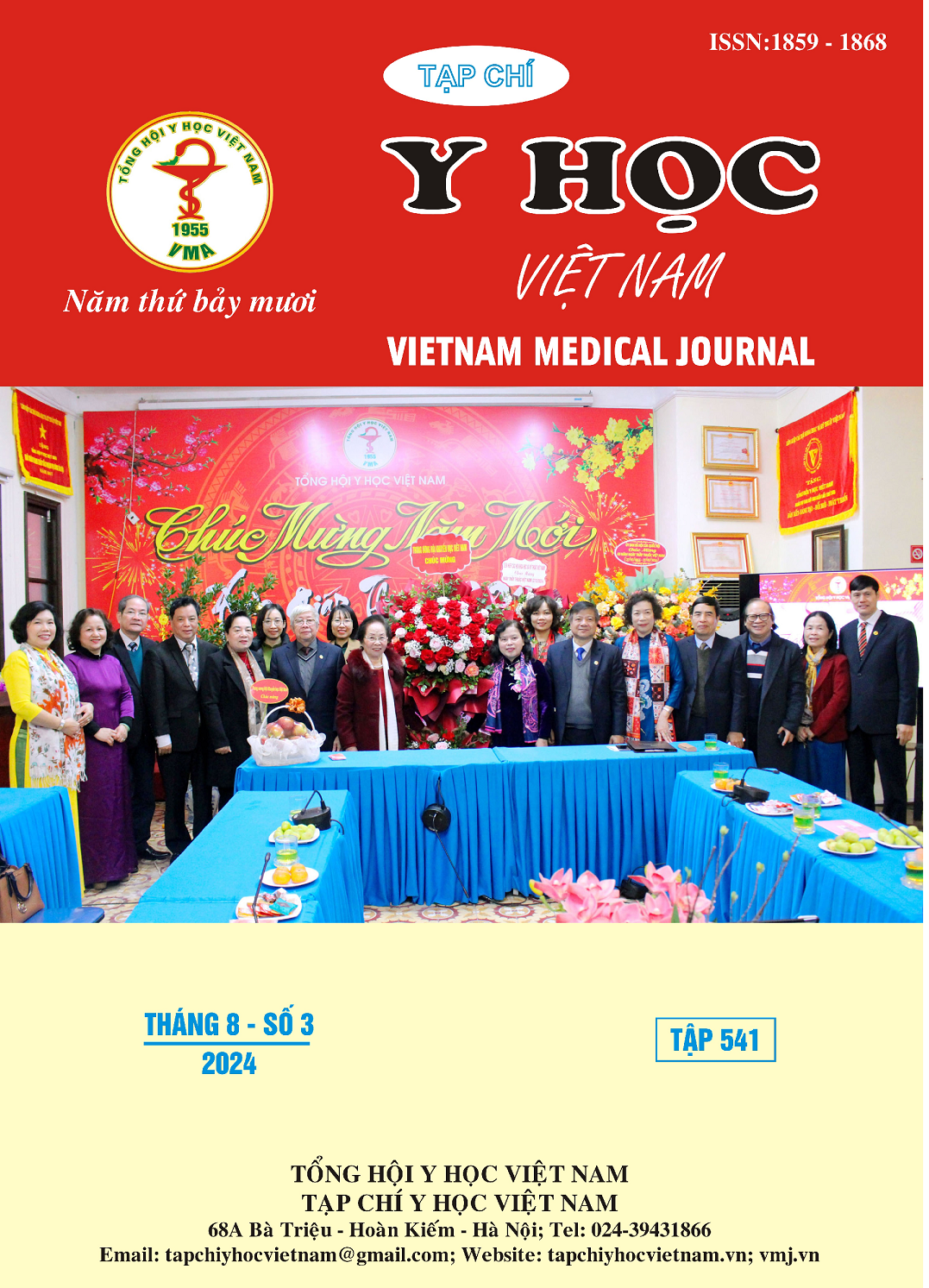RESULTS OF TREATMENT AND FACTORS ASSOCIATED WITH OUTCOMES OF CHILDREN BEYON NEONATAL REQUIRED MECHANICAL VENTILATION AT THE PEDIATRICS CENTER-BACH MAI HOSPITAL
Main Article Content
Abstract
Objective: To evaluate the results of mechanical ventilation treatment and factors associated with treatment outcomes of children who required mechanical ventilation at Pediatric Center - Bach Mai Hospital from 2018 to 2022. Subjects: 265 children aged beyond the neonatal age who received mechanical ventilation at the Pediatric Center - Bach Mai Hospital from January 2018 to December 2022. Methods: retrospective descriptive study. Results: There were 265 children with an average age was 8,1 ± 5,2 years. Among them, 37,4% had underlying conditions; 31,3% required non-invasive mechanical ventilation, 17,0% needed invasive mechanical ventilation after failing non-invasive ventilation, and 51,7% required immidiate invasive mechanical ventilation. The most common ventilation modes were SIMV (82,6%) and A/C (7,6%), the weaning success rate was 87,3%. Several risk factors associated with an increased risk of unsuccessful weaning included having underlying conditions and multi-organ failure. Children with underlying conditions had a 3,41 times higher risk of unsuccessful weaning compared to those without underlying conditions. Conclusion: Patients ≥ 10 years old, with underlying diseases increase the mortality rate in patients on mechanical ventilation. The mechanical ventilation method that reduces the mortality rate the most among the modes is SIMV. Most patients are successfully weaned off the machine. It is very important to pay attention to children with underlying medical conditions and treatment of ventilated patients.
Article Details
Keywords
mechanical ventilation, pediatric ventilation, pathological mechanical ventilation.
References
2. Hefner J.L. and Tsai W.C (2013), Ventilator-Dependent Children and the Health Services System. Unmet Needs and Coordination of Care. Annals ATS,10(5):482-489.
3. Zhang Z., Tao J., Cai X. et al (2023), Clinical characteristics and outcomes of children with prolonged mechanical ventilation in PICUs in mainland China: A national survey. Pediatr Pulmonol;58(5):1401-1410.
4. Balcells Ramírez J., López-Herce Cid J., Modesto Alapont V. et al (2004) Grupo de Respiratorio de la Sociedad Española de Cuidados Intensivos Pediátricos. [Prevalence of mechanical ventilation in pediatric intensive care units in Spain, An Pediatr (Barc), 61(6):533-541.
5. Yaman A., Kendirli T., Ödek Ç., et al (2016), Efficacy of noninvasive mechanical ventilation in prevention of intubation and reintubation in the pediatric intensive care unit. J Crit Care, 32:175-181.
6. Mayordomo-Colunga J., Medina A., Rey C. et al (2010), Non invasive ventilation after extubation in paediatric patients: a preliminary study. BMC Pediatr, 10-29.
7. Kendirli T., Kavaz A., Yalaki Z., Oztürk Hişmi B., et al, (2006), Mechanical ventilation in children. Turk J Pediatr, 48(4):323-327.
8. Amin R., Verma R., Bai Y.Q. et al (2023), Incidence and Mortality of Children Receiving Home Mechanical Ventilation. Pediatrics, 151(4):e2022059898.
9. Can F.K., Anıl A.B., Anıl M., et al (2018), The outcomes of children with tracheostomy in a tertiary care pediatric intensive care unit in Turkey. Turk Pediatri Ars, 53(3):177-184.
10. Brochard L., Rauss A., Benito S., et al (1994), Comparison of three methods of gradual withdrawal from ventilatory support during weaning from mechanical ventilation. Am J Respir Crit Care Med, 150(4):896-903.


